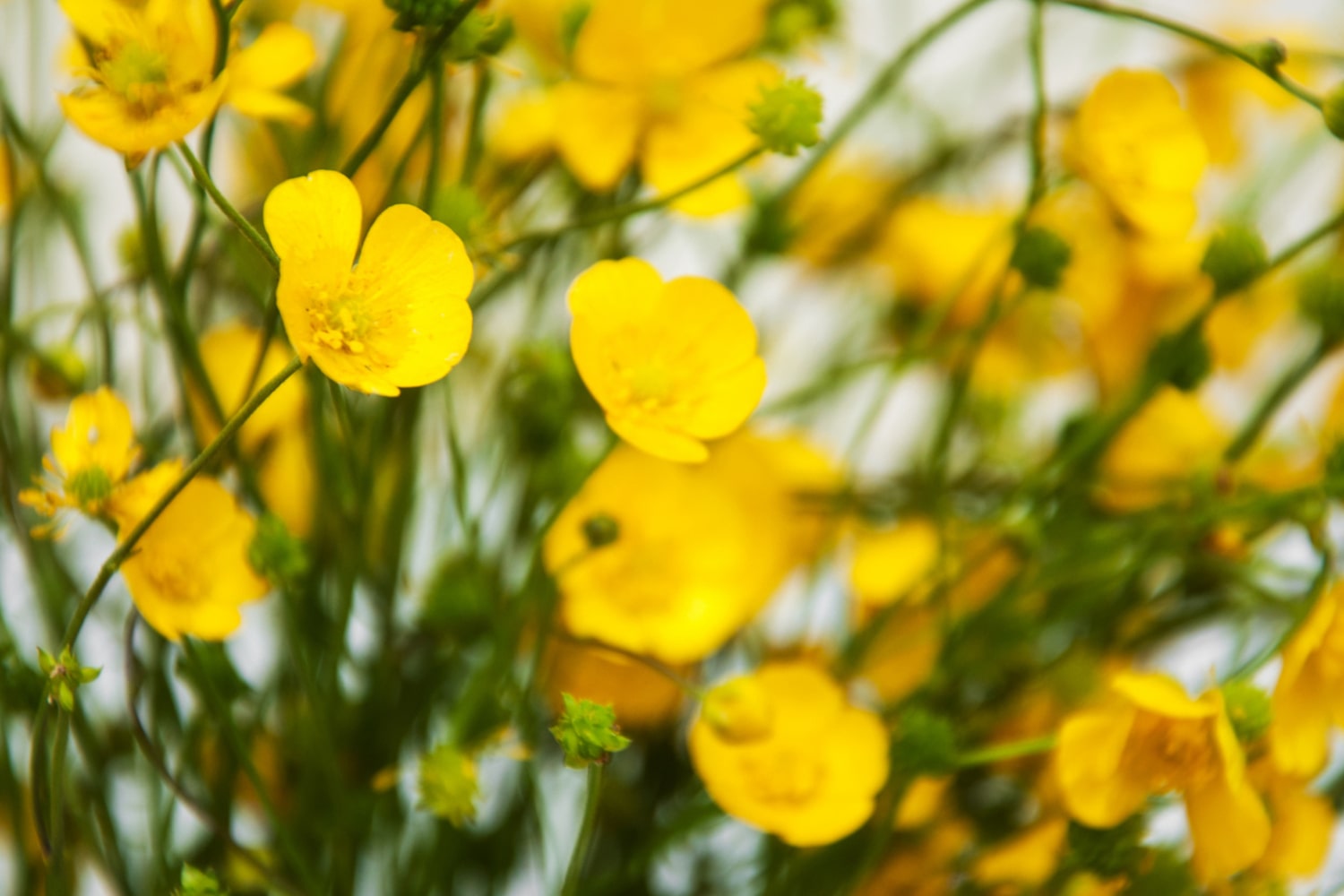Buttercups are bright and charming flowers commonly found in meadows, gardens, and parks around the world. They have a long history of use in traditional medicine, art, and the culture of many peoples. Despite their attractiveness, some species of buttercups contain toxic substances, so it is important to be aware of their properties. Here are fascinating facts about buttercups that will help you better understand these plants and may change your perspective on these delicate members of the flora. Many of these facts might be new to you but they reveal the uniqueness of these beautiful flowers.
- Buttercups belong to the Ranunculaceae family and include over 600 species distributed almost worldwide. They can be annuals, biennials, or perennials and are able to adapt to various climatic conditions—from mountainous meadows to moist lowlands.
- The flowers of buttercups often have a vivid yellow coloration, making them very noticeable against green backgrounds. However, there are also species with white, pink, red, or even purple flowers, adding diversity to this genus.
- Buttercups typically bloom in spring and summer, attracting numerous pollinating insects, especially bees. Their shiny petals can reflect light, helping to lure insects from a distance.
- Some buttercup species have been used in folk medicine to treat ailments such as rheumatism, gout, and skin diseases. However, caution is necessary since many species have toxic properties and can cause irritation or poisoning.
- The stems and leaves of buttercups contain poisonous alkaloids that protect the plants from being eaten by animals. Because of this, buttercups are often avoided by large herbivores on pastures.
- In culture, buttercups often symbolize purity, tenderness, and childhood innocence. They frequently appear in literature, art, and folklore of various peoples, carrying positive emotional meanings.
- The structure of buttercup flowers varies greatly—from simple flowers with five petals to complex double varieties. This makes them popular among gardeners who use buttercups to create decorative arrangements.
- Interestingly, some buttercups can close their petals at night or during rain, protecting the inner parts of the flower from adverse weather conditions.
- Depending on the species, buttercups can be low-growing or fairly tall, reaching over a meter in height. This characteristic allows them to occupy different ecological niches.
- Buttercups are important for beekeeping as they provide morning and summer nectar and pollen necessary for the development of bee colonies.
- Some buttercup species are used in landscape design to create flower carpets or decorate water bodies due to their resilience and bright colors.
- In botanical science, buttercups are studied because of their complex genetics and species diversity. These studies help to understand evolutionary processes and plant adaptation.
- Buttercups can grow both in sunny open areas and in partial shade, making them versatile plants for various landscapes.
- In some countries, buttercups are considered symbols of spring and nature’s renewal, often collected for festive bouquets or seasonal decorations.
- Thanks to their bright colors and ease of care, buttercups are popular among novice gardeners. They grow quickly and can beautify any garden.
- Buttercups are known for their ability to regenerate after mowing, allowing their use in ground cover and erosion prevention.
- Some species have the ability to store water in their tissues, helping them survive in dry regions.
- Although buttercups are often regarded as simple wildflowers, they play an important ecological role in supporting biodiversity.
- Depending on the species, buttercup seeds can be dispersed by wind or animals, ensuring their natural spread.
- In folk beliefs, buttercups were often associated with protection from evil spirits or misfortune and used as talismans.
- Buttercups are also a food source for certain species of butterflies and other insects, supporting natural food chains.
- These flowers can be a wonderful gift symbolizing sincerity and kindness, which makes buttercups popular in floristry.
These amazing facts about buttercups reveal their multifaceted beauty and importance, which often go unnoticed in the abundance of nature. Their adaptability, variety of forms and colors, and ecological role make buttercups truly unique plants. We hope this collection of fascinating facts about buttercups helped you see them in a new light and inspired you to explore the flora further.





